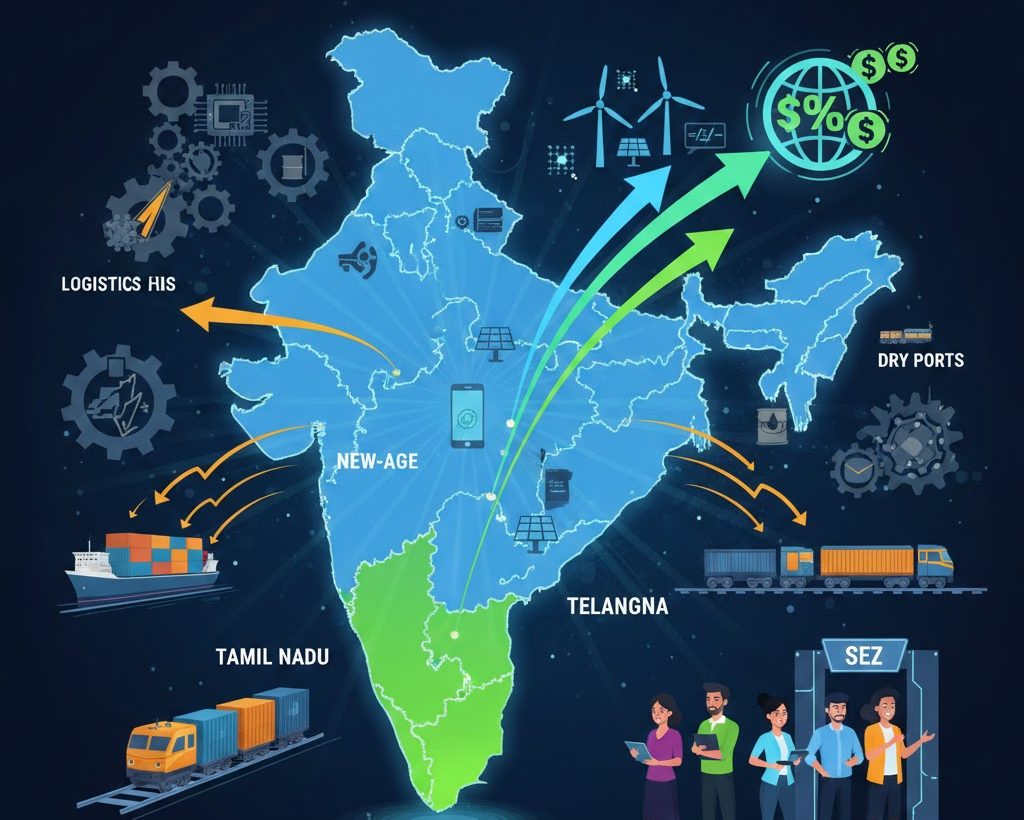Font size:
Print
Sahyadri Farms: A Model for Transforming India’s Fruits and Vegetables (F&V) Sector
Context:
Sahyadri Farms, India’s largest exporter of grapes, stands as a beacon for the potential of Farmer Producer Companies (FPCs) in transforming the agricultural landscape.
Sahyadri Farms’ Success Story
- Significance of Sahyadri Farms: India’s largest exporter of grapes, showcasing the power of Farmer Producer Companies (FPCs) in revolutionising agriculture.
- Key Focus Areas: Empowering farmers, promoting sustainable practices, enhancing market stability, and fostering economic growth in the F&V sector.
- Leading Exporter:
- Largest exporter of grapes, contributing 63.9% of India’s grape export revenue.
- Primary export markets: Europe and UAE (90% of grape exports).
- Farmer share: 55% of the free-on-board price.
- Diversified Revenue Streams: 35% of revenue generated from value-added products like tomato ketchup, puree, and sauce.
- Job Creation and Women’s Empowerment: Employment of over 6,000 people, with 32% women.
Key Factors Behind Sahyadri’s Success
- Farming Collectivism:
- The formation of the Farmer Producer Company (FPC) allows farmers to access economies of scale.
- Better price negotiation, value-added services, and collective decision-making.
- Global Market Access:
- Strong international market ties, focusing on premium markets.
- Adherence to strict quality standards and traceability.
- Value Addition and Processing:
- Tomato processing into high-value products mitigates price fluctuations and maximises farmer revenue.
- Job Creation and Inclusive Growth:
- Empowerment of women in agriculture and business operations.
Role of Sahyadri Farms in India’s Broader Fruit and Vegetables (F&V) Sector
- Farmer Producer Organisations (FPOs):
- Sahyadri’s success illustrates the potential of FPOs in enhancing farmer welfare.
- Aligns with the government’s goal of establishing 10,000 FPOs.
- Strengthening FPOs: Government’s role: Providing financial support, infrastructure, and digital tools to enhance efficiency and market access.
- Government Programs:
- Expansion of schemes like Operation Greens and National Horticulture Mission.
- Integration with FPOs can stabilise prices and counteract price volatility.
- Value Chains and Processing: Encouraging F&V processing can reduce distress sales and open new markets, benefiting farmers and consumers.
Challenges Faced by the F&V Sector
- Unpredictable Weather: Impact on production and yield.
- Price Volatility: Fluctuating global prices for fresh produce.
- Policy Changes: Changing government policies affecting small-scale farmers.
- Small-Scale Farming: Limited bargaining power and resource access for individual farmers.
Opportunities for the F&V Sector
- FPC Model as a Solution: Collective bargaining power, better credit access, and organised market channels for small farmers.
- Increasing Value Addition: Reducing dependency on fresh produce markets by focusing on processed products (e.g., sauces, juices).
- Government Support: Policy interventions can aid in overcoming challenges and fostering sustainable agricultural growth.
Way Forward
- Scaling Up FPC Models:Policymakers should focus on replicating Sahyadri’s success across India.
- Policy and Infrastructure Support: Government interventions to provide infrastructure, capital, and technology for FPOs.
- Focus on Diversification and Value Addition: Invest in value-added products to stabilise farmer incomes and reduce dependency on volatile fresh produce markets.
- Strengthening Farmer Linkages: Enhance market access through FPOs and processing, helping farmers receive a larger share of the value chain.


